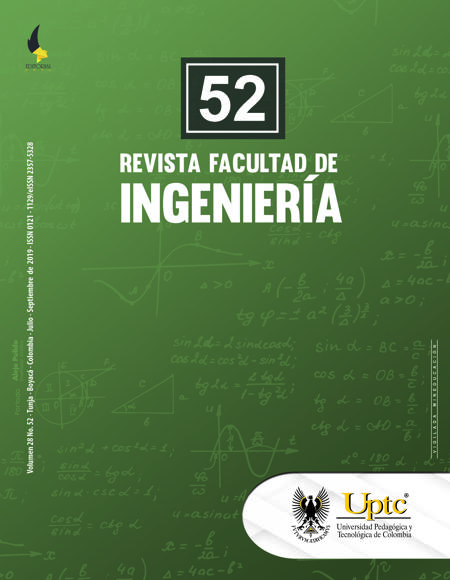Synthesis of an Anticorrosive Pigment by Thermal Treatment of Iron Oxides from Steel Industry Wastes

Abstract
This work reports the obtaining of an anticorrosive pigment composed mainly of hematite (ɑ-Fe2O3) from a powder steel industry waste from rust scale of rebar steel. This residue is mainly composed of Fe2O3 (87.97 %), SiO2 (6.13 %), CaO (1.88 %), Al2O3 (1.30%) and MnO (0.77 %). The total iron oxide of the residue is constituted by the following crystalline phases: magnetite, maghemita, lepidocrocita, wüstite, goethite and hematite. The production of a pigment with a high content of hematite was possible thanks to the high content of precursor iron oxides, which were calcined at different temperatures (750-850 °C) and holding times (0.5-1.50 h). For characterizing the iron content chemically and to identify their iron oxides phases, it was used X-ray fluorescence (XRF) and X-ray diffraction (XRD). The results showed that the pigment with the highest amount of hematite (ɑ-Fe2O3) was obtained at a calcination temperature of 850 °C and a holding time of 1.00 h.
Keywords
anticorrosive pigment, hematite, iron oxides, steel industry waste, thermal treatment, X ray diffraction
References
[1] Md. S. Quddus et al., “Synthesis and Characterization of Pigment Grade Red Iron Oxide from Mill Scale,” International Research Journal of Pure and Applied Chemistry, vol. 16 (4), pp. 1-9, Aug. 2018. https://doi.org/10.9734/IRJPAC/2018/42935.
[2] R. M. Cornell, and U. Shewertmann, “Transformations,” in The Iron Oxides, 2nd ed. Weinheim, Germany: Wiley-VCH, Jul. 2003, pp. 365-409. https://doi.org/10.1002/3527602097.ch14.
[3] R. Zboril, M. Mashlan, and D. Petridis, “Iron (III) Oxides from Thermal Processes Synthesis, Structural and Magnetic Properties, Mössbauer Spectroscopy Characterization, and Applications,” Chem. Mater., vol. 14 (3), pp. 969-982, Mar. 2002. https://doi.org/10.1021/cm0111074.
[4] O. R. K. Montedo, F. M. Bertan, R. Piccoli, D. Hotza, and A. P. N. de Oliveira, “Obtenção de Pigmentos de Óxido de Ferro a partir de Resíduos Siderúrgicos,” in Proc. 48th Annu. Meeting. of the Brazilian Ceramic Society, Curitiba, Brazil, 2004. Available at: https://www.ipen.br/biblioteca/cd/cbc/2004/artigos/48cbc-4-23.pdf.
[5] J. Balbuena, L. Sánchez, and M. Yusta-Cruz, “Use of Steel Industry Wastes for the Preparation of Self-Cleaning Mortars,” Materials, vol. 12 (4), pp. 1-13, Feb. 2019. https://doi.org/10.3390/ma12040621.
[6] R. Sugrañez, M. Yusta-Cruz, I. Marmol, J. Morales, and L. Sánchez, “Preparation of Sustainable Photocatalytic Materials through the Valorization of Industrial Wastes,” ChemSusChem, vol. 6 (12), pp. 2340-2347, Dec. 2013. https://doi.org/10.1002/cssc.201300449.
[7] S. Aguaiza, and O. Aldás, “Formación de hematita a partir de desechos sólidos producidos en la extracción de oro, mediante tratamientos térmicos,” Revista EPN, vol. 33 (2), 157-160, 2014.
[8] V. Della, J. A. Junkes, O. R. K. Montedo, A. P. N. Oliviera, C. R. Rambo, and D. Hotza, “Synthesis of Hematite from Steel Scrap to Produce Ceramic Pigments,” Am. Ceram. Soc. Bull., 86(5), 9101-1108, May. 2017.
[9] C. Sikalidis, T. Zorba, K. Chrissafis, and K. M. Paraskevopoulos, “Iron Oxide Pigmenting Powders Produced by Thermal Treatment of Iron Solid Wastes from Steel Mill Pickling Lines,” J. Therm. Anal. Calorim. vol. 86 (2), pp. 411-415, Nov. 2006. https://doi.org/10.1007/s10973-005-7168-8.
[10] H. Ovčačíková, “Possibilities of Recycling of Oiled Scale for Preparation of Pigments,” Acta Metall. Slovaca-Conf., vol. 14, pp. 90-97, Sep. 2014. https://doi.org/10.12776/amsc.v4i0.217.
[11] M. A. Legodi, and D. De Waal, “The Preparation of Magnetite, Goethite, Hematite and Maghemite of Pigment Quality from Mill Scale Iron Waste,” Dyes and Pigments. vol. 74 (1), pp. 161-168, Apr. 2007. https://doi.org/10.1016/j.dyepig.2006.01.038.
[12] E. Zitrou, J. Nikolaou, P. E. Tsakiridis, and G. D. Papadimitriou, “Atmospheric Corrosion of Steel Reinforcing Bars Produced by Various Manufacturing Processes,” Construction and Building Materials, vol. 21 (6), pp. 1161-1169, Jun. 2007. https://doi.org/10.1016/j.conbuildmat.2006.06.004.
[13] L. Cuesta, “Óxidos de hierro en pinturas anticorrosivas,” Inpra Latina, 19(1), pp. 26-30, Feb. 2014.
[14] H. S. A. Emira, N. A. Abdel-Khalek, and F. F. Abdel-Mohsen, “Protective Byproducts. Steelmaking Waste can be Converted to Anticorrosive Pigments,” Europ. Coatings Jnl., no. 10, pp. 40-46, Oct. 2007.
[15] E. Darezereshki, “Nano-Particles by Direct Thermal-Decomposition of Maghemita,” Materials Letters, vol. 65 (4), pp. 642-645, Feb. 2011. https://doi.org/10.1016/j.matlet.2010.11.030.
[16] K. Przepiera, and A. Przepiera, “Kinetics of Thermal Transformations of Precipitated Magnetite and Goethite,” J. Therm. Anal. Calorim., vol. 65 (2), pp. 497-503, Aug. 2001. https://doi.org/10.1023/A:1012441421955.
[17] Y. Cudennec, and A. Lecerf, “Topotactic Transformations of Goethite and Lepidocrocite into Hematite and Maghemita,” Solid State Sciences, vol. 7 (5), pp. 520-529, May. 2005. https://doi.org/10.1016/j.solidstatesciences.2005.02.002.
[18] K. Mori, T. Okada, Y. Takagi, Y. Takada, and T. Mizoguchi, “Oxidation and Disproportionation of Wüstite Studied by Mössbauer Spectroscopy,” Jpn. J. Appl. Phys., vol. 38 (2B), Feb.1999. https://doi.org/10.1143/JJAP.38.L189.
[19] A. M. Olmedo, “Estudio de películas de óxidos de hierro crecidas y depositadas en diversos ambientes,” Ph. D Disertation, Univ. Buenos Aires, Buenos Aires, Argentina, 1990. Available at: http://hdl.handle.net/20.500.12110/tesis_n2320_Olmedo.
[20] Y. M. Mos, A. C. Vermeulen, C. J. N. Buisman, and J. Weijma, “X-Ray Diffraction of Iron Containing Samples: The Importance of a Suitable Configuration,” Geomicrobiology Journal, vol. 35 (6), pp. 511-517, Jul. 2018. https://doi.org/10.1080/01490451.2017.1401183.
[21] P. Whitfield, “Laboratory X-Ray Powder Diffraction,” in U. Kolb, K. Shankland, L. Meshi, A. Avilov y W. David, Eds., Uniting Electron Crystallography and Powder Diffraction, Dordrecht, Países Bajos: Springer, 2012, pp. 53-65.
[22] A. C. Da Silva et al., “Converting Fe-rich Magnetic Wastes into Active Photocatalysts for Environmental Remediation Processes,” Journal of Photochemistry and Photobiology A Chemistry, vol. 335, pp. 259-267, Feb. 2017. https://doi.org/10.1016/j.jphotochem.2016.11.025.g.
[23] D. Jaramillo, “Desarrollo de un protocolo para la aplicación del método de Rietveld y del estándar interno en la caracterización de materiales cerámicos con contenido de amorfos,” Thesis, Univ. EAFIT, Medellín, Colombia, 2015. Available at: http://hdl.handle.net/10784/8531.
[24] M. Morcillo, and B. Chico, Eds. La corrosión atmosférica del acero al carbono en ambientes costeros, España: Editorial CSIC, 2018.
[25] J. Alcántara, D. De La Fuente, B. Chico, J. Simancas, I. Díaz, and M. Morcillo, “Marine Atmospheric Corrosion of Carbon Steel: A Review,” Materials, vol. 10 (4), pp. 1-67, Apr. 2017. https://doi.org/10.3390/ma10040406.
[26] S. Díaz, A. Forero, and O. J. Restrepo, “Hematita especular como pigmento natural en pinturas industriales,” Prospectiva, vol. 8 (1), pp. 71-76, Jun. 2010.